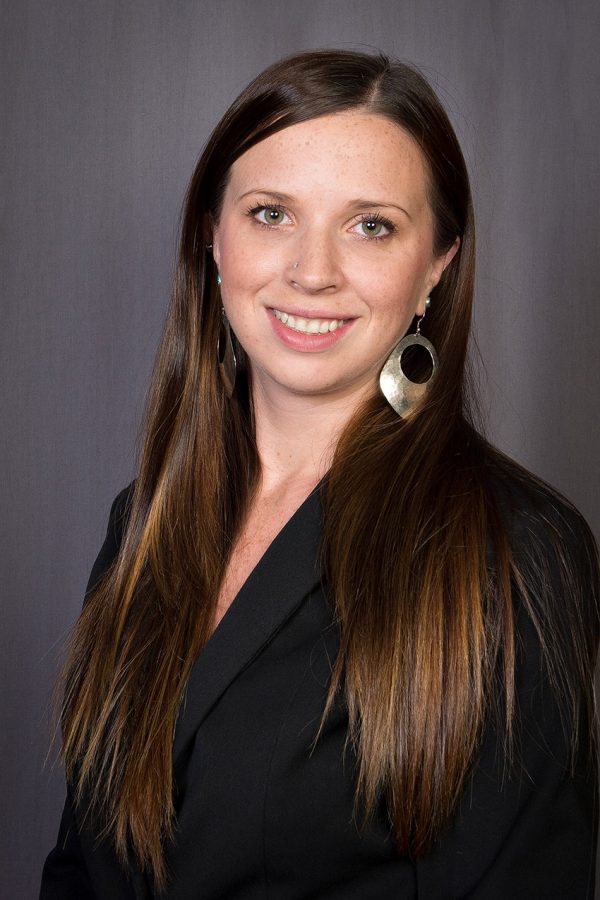When Kasey Faust’s high school physics teacher told her she was going to be an engineer, she laughed.
“I thought engineering was just train conductors,” Faust said.
Faust, a civil engineering assistant professor, grew up in Alaska with a single mother, two siblings and not a single engineer in the family. She went to college planning to study social work.
Some time during her sophomore year, Faust said she came across a presentation on civil engineering and realized that engineering was just social work on a larger scale. The presentation convinced her there was no better way to impact a whole community than through critical infrastructure services.
When Faust returned to her high school a few years later, she told her physics teacher that not only was she an engineer, but she had four degrees in engineering. He really seemed to get a kick out of it, she said.
She recounts right after she switched to civil engineering, she received a C in her first statics class, a basic engineering course.
“I was crying when I called my mother,” Faust said. “She said, ‘Do better next time,’ and hung up. It made me realize not every class can be your best class. It’s a means to an end to get to where you want to be. All you can do is your best.”
Faust studies human infrastructure interaction, or how people use the components of their built environment. Faust started researching how changing populations affect infrastructure in shrinking cities, or dense places that have experienced notable population loss, while working on her Ph.D. dissertation.
Urban decline in shrinking cities puts its remaining residents at a disadvantage: The fixed costs of the infrastructure that were intended to support a larger population get passed on to a smaller tax base. Through her research, Faust identified alternatives on how to lower some of these fixed costs.
“In the U.S., there are approximately 20 shrinking cities, but people don’t talk about them because we’re so growth-centric,” Faust said. “We need to embrace the reality of our population dynamics. We need to see what the trends are doing instead of the idealized view of what’s going on.”
One of the shrinking cities Faust looked into was Flint, Michigan. Flint had lost about 46 percent of its population since 1960, and Faust was already there talking to its residents years before a 2014 crisis when elevated lead levels were found in the city’s water supply.
During this crisis, Faust’s team returned to study how public perception toward water sector infrastructure had changed in Flint. Faust said that because the team had already collected data on public perception before the water crisis, they were able to identify how the event affected the public’s trust in the government, the community’s interaction with infrastructure and people’s behaviors.
Although Faust said she never expected the city’s water source to be contaminated, she wasn’t surprised when she heard the news.
“When I heard about the crisis, I was sad but not surprised,” Faust said. “A lot of what happened with the crisis was a product of decline: the reduced personnel, the need to switch from Detroit to the Flint River as the water source. I didn’t know that this would be the particular outcome, but these type of things can happen in an environment of reactive planning because of the constraints preventing proactive planning.”
Faust’s most recent study focuses on the opposite problem: The study documents changes in German cities in response to an ongoing influx of refugees, the largest mass migration event since World War II. The initial idea of the study sparked from a conversation Faust had with colleague Jessica Kaminsky from the University of Washington and led to a collaboration to examine the changes in Munich, Berlin and Leipzig in response to the refugee crisis.
So far, they have collected data from interviewing nonprofits, government agencies and others who play a critical role in providing service to displaced persons. The paper is expected to be published next February.
As a member of several initiatives to include women in engineering, Faust said that greater diversity will open up her field to new ideas. Faust said men and women take different approaches to civil engineering; she cited a study that found differences between the playground designs of school-age boys and girls.
“Moral of the story is we need both sides,” Faust said. “The females are going to build the most expensive playground. Males are building one without a toilet. I think it’s really important to work towards creating an environment where anyone can have seat at the table. The only way we’ll get a solution is if we have different points of view.”
When Faust studied construction engineering earlier this decade, she and her best friend were the only females in the class.
“At the end of the day, we knew we wanted a seat at that table because we wanted to bring in a different point of view,” Faust said.















